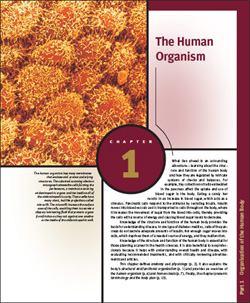
 | What lies ahead is an astounding adventure—learning about the structure and function of the human body and how they are regulated by intricate systems of checks and balances. For example, tiny collections of cells embedded in the pancreas affect the uptake and use of blood sugar in the body. Eating a candy bar results in an increase in blood sugar, which acts as a stimulus. Pancreatic cells respond to the stimulus by secreting insulin. Insulin moves into blood vessels and is transported to cells throughout the body, where it increases the movement of sugar from the blood into cells, thereby providing the cells with a source of energy and causing blood sugar levels to decrease. Knowledge of the structure and function of the human body provides the basis for understanding disease. In one type of diabetes mellitus, cells of the pancreas do not secrete adequate amounts of insulin. Not enough sugar moves into cells, which deprives them of a needed source of energy, and theymalfunction. Knowledge of the structure and function of the human body is essential for those planning a career in the health sciences. It is also beneficial to nonprofessionals because it helps with understanding overall health and disease, with evaluating recommended treatments, and with critically reviewing advertisements and articles. This chapter defines anatomy and physiology (p. 2). It also explains the body’s structural and functional organization (p. 5) and provides an overview of the human organism (p. 6) and homeostasis (p. 7). Finally, the chapter presents terminology and the body plan (p. 13). |